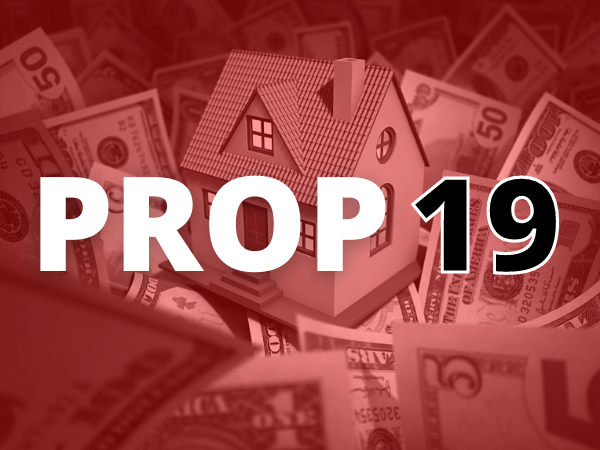Proposition 19: The Aftermath

This article was contributed by Jeffrey Prang, Los Angeles County Assessor
Proposition 19 was approved by the voters in 2020 by a slim margin, and it has created a tumultuous backlash and exasperating delays raising the ire of many a taxpayer and assessor alike. Proposition 19 is the Constitutional amendment to Proposition 13 that allows seniors and those who are disabled to sell their primary residence and buy a new home while maintaining their low, Proposition 13 property tax base, as well as limits a parents’ ability to leave their homes to their children (and in some cases grandchildren) without descendants having to pay increased property taxes.
This change may sound simple, but as with most legislation created by the ballot box, there have been unintended consequences around operational issues that have resulted in delays and scores of frustrated taxpayers wondering why everything is taking so long to implement. Needless to say, Proposition 19 is still posing challenges for California assessors who are responsible for administering the new law. The measure is very complex and requires significant technological and administrative changes that have been difficult for the 58 county assessors to implement and that has led to processing delays and understandable frustration.
Most complaints are from frustrated property owners asking about the delays in the processing of property transfers, specifically, senior citizen “base year transfers” and “parent to child transfers.” I, along with assessors throughout the state, have been warning anybody who would listen since the law was approved by voters in 2020 that these problems were going to occur without a legislative remedy. The warnings have not garnered much attention, so I decided to go public, when given the opportunity, to address the challenges in a newspaper column. Since this piece has circulated, there has been a move afoot to unfairly shift criticism away from the actual cause onto to the shoulders of assessors.
First, Proposition 19, as adopted, was practically unenforceable. The amendment’s ballot language contained numerous ambiguities, contradictions, and other deficiencies. It took my Office and other assessors’ statewide weeks to analyze the impacts and requirements needed to implement the measure. We subsequently drafted proposed legislation to fix the many administrative deficiencies.
Secondly, Proposition 19 went into effect on February 16, 2021, barely two months after its adoption. Given the fundamental changes that are required to our operations and technology, and the establishment of new statewide logistics and protocols, we conservatively needed at least 12-18 months to implement the measure.
Assessors had to, and continue to, dedicate significant resources to try and quickly implement the measure, however, much more work remains to be done to fully comply with the Proposition 19 requirements. We also can’t forget our primary Constitutional function of closing the 2022 Assessment Roll by June 30. Without a fully executed Assessment Roll, the County’s property tax dollars we rely on could be shorted and that hurts all of us.
Needless to say, and as mentioned earlier, Proposition 19 required legislative clarification to help assessors untangle many of the ambiguities in the law. Legislation was written and introduced, Senate Bill 539, that addressed many of the deficiencies that assessors required to administer the measure, but it was only passed and signed into law by the Governor on September 30, 2021, meaning that assessors and the State Board of Equalization, which establishes statewide rules and standards for assessors, worked for months with little clarification and guidance on how to administer the measure. Moreover, there is now still another round of legislative language being considered (but not yet drafted) that could spare the property owner inadvertent property tax hikes through a property tax deferment process. Again, legislative language that my office has generated.
We’ve also undertaken enormous efforts to provide comprehensive outreach and public education, while internally developing new systems, protocols, and guidelines to streamline the Proposition 19 claims. Additionally, we developed a dynamic landing page on our website dedicated to Proposition 19 that offers valuable resources and information, assessor.lacounty.gov/prop19. It also includes tools that will help you estimate your new property tax basis when the law requires an adjustment to your assessment.
While California’s 58 assessors and the Board of Equalization play catch-up in processing applications, I must emphasize the implementation of Proposition 19 will continue to be a significant challenge in the months ahead and will continue to create a great deal of confusion and uncertainty for both the public and administrators. However, I do anticipate that Los Angeles County will complete the backlog by late summer for property owners who were sent supplemental bills before their claims were reviewed. They will be made whole.
Los Angeles County Assessor, Jeffrey Prang, has been in office since 2014. Upon taking office, Assessor Prang implemented sweeping reforms to ensure that the strictest ethical guidelines rooted in fairness, accuracy and integrity would be adhered to in his office, which is the largest office of its kind in the nation with 1,300 employees and provides the foundation for a property tax system that generates over $17 billion annually.
